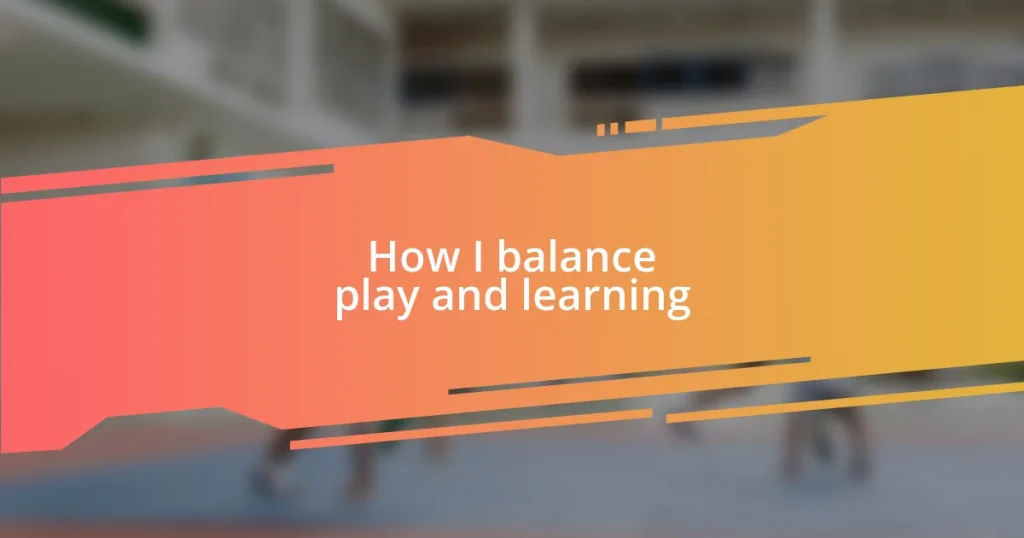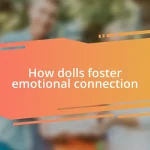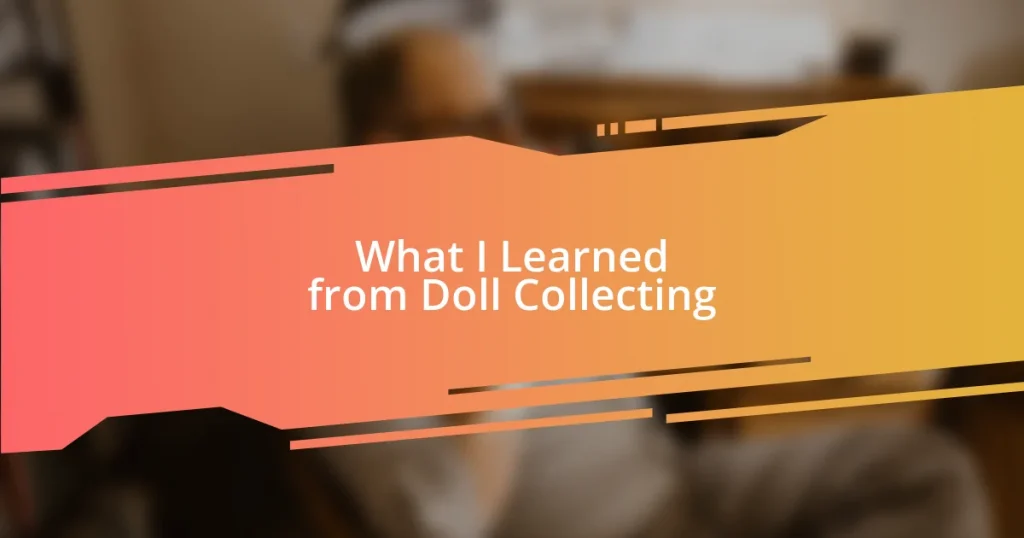Key takeaways:
- Play is a vital tool in learning, allowing children to explore concepts organically while developing cognitive and social skills.
- Balancing structured learning with play enhances engagement and retention, fostering emotional well-being and self-esteem in children.
- Incorporating playful strategies, like gamification and hands-on projects, can transform educational experiences and improve student motivation.
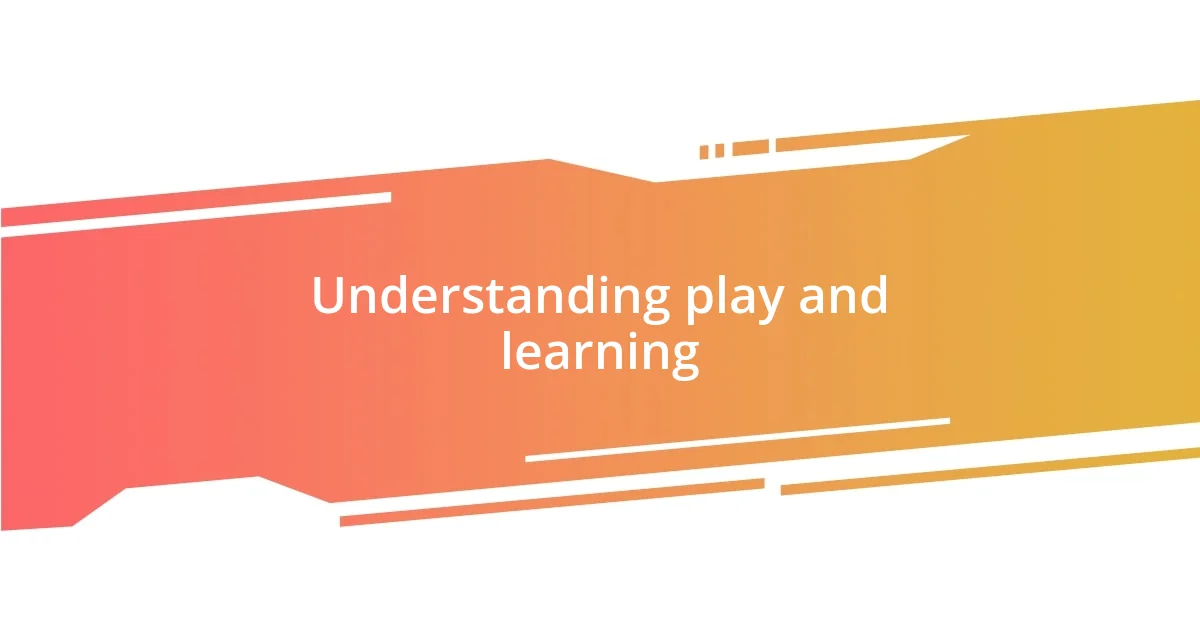
Understanding play and learning
Play is often viewed simply as a leisure activity, but I believe it serves a much deeper purpose in learning. I remember watching my niece play with building blocks; she was completely absorbed, yet I could see her exploring concepts like balance and symmetry without even realizing it. Isn’t it fascinating how kids naturally integrate learning into their playtime?
When I think back to my own childhood, I realize that many of my most memorable lessons came from playful experiences—whether it was team sports teaching me about cooperation or imaginative games fostering creativity. It’s almost like play is the thread that weaves knowledge into the fabric of our experiences. Have you ever considered how your favorite childhood game might have shaped your understanding of teamwork or problem-solving?
The interplay between play and learning creates a dynamic environment where exploration thrives. For instance, I’ve noticed that children are often more engaged when learning feels like a game rather than a chore. This makes me wonder: How can we create more opportunities for playful learning in our own lives? Wouldn’t it be wonderful to see adults embracing playfulness as a way to enhance their learning too?
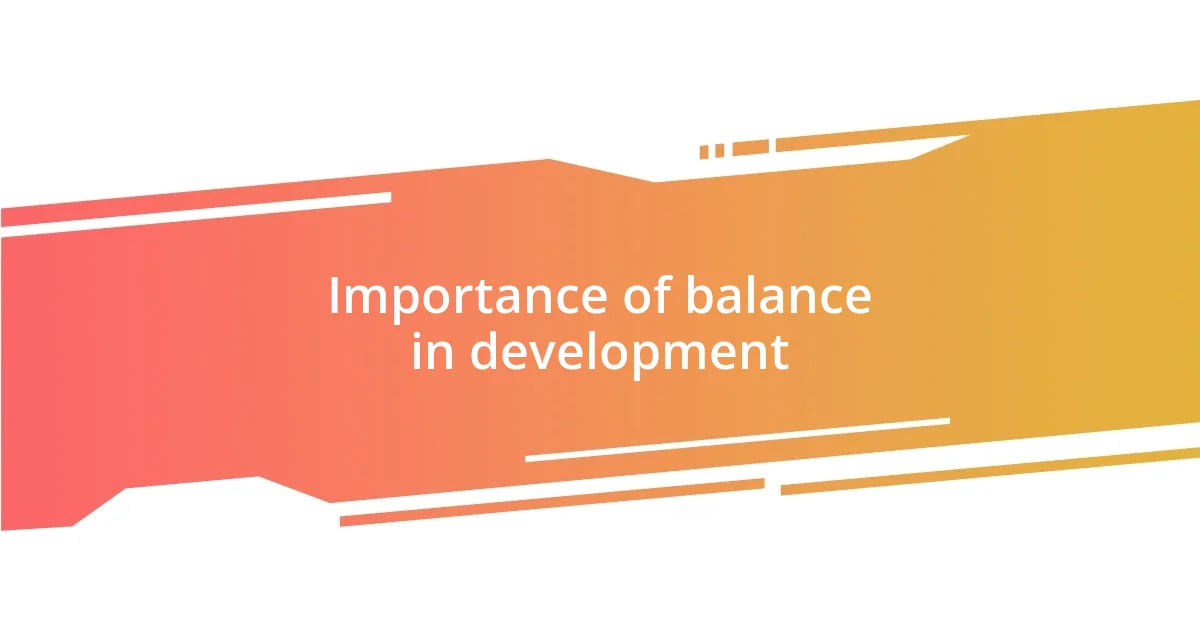
Importance of balance in development
Balancing play and learning is crucial in child development. I often think about how my friends and I would gather in the backyard, turning the simplest objects into tools for imaginative play. Those experiences weren’t just fun— they were foundational in developing our cognitive and social skills. What a remarkable way to learn together while creating lasting memories!
In my experience as an educator, I’ve observed that children thrive when they can alternate between structured learning and free play. For instance, I once facilitated a lesson where students built a mini-garden. While they learned about ecosystems, they were also honing their teamwork skills as they dug, planted, and laughed together. It showed me that learning doesn’t have to be stiff and boring; it can be joyous and interactive, blending beautifully with play.
Moreover, the emotional aspect can’t be overlooked. Play allows children to express themselves, reinforcing their self-esteem and emotional regulation. I remember a student who struggled academically but soared in our interactive storytelling sessions. As he crafted narratives, his confidence blossomed, proving that a solid balance can truly unleash potential.
| Play | Learning |
|---|---|
| Exploratory and imaginative | Structured and goal-oriented |
| Fosters creativity and social skills | Develops critical thinking and knowledge acquisition |
| Emotionally engaging | Often perceived as demanding |

Strategies for integrating play
Integrating play into learning can truly transform the educational experience. For instance, I remember a time when I set up a scavenger hunt for my students. Each clue was tied to a lesson we had just completed, creating an engaging overlap between exploration and education. The energy in the room was palpable as they raced to solve problems while enjoying themselves. It reinforced my belief that when learning becomes an adventure, engagement skyrockets.
Here are some strategies I’ve found effective for blending play with learning:
- Gamify Lessons: Turn ordinary lessons into games, like incorporating quizzes into a Jeopardy-style format.
- Interactive Storytelling: Allow kids to create their own narratives, linking characters to the subjects they study.
- Outdoor Learning: Take lessons outside; gardening or nature walks can seamlessly weave in educational elements.
- Role-Playing: Encourage children to act out concepts, whether it’s historical events or scientific processes, to deepen their understanding.
- Hands-On Projects: Use building activities or art projects that require critical thinking and collaboration among peers.
I’ve seen firsthand how these methods not only help children grasp concepts but also ignite their intrinsic motivation. The laughter, curiosity, and even the occasional frustration during these activities create vibrant learning moments. It reminds me that when play and learning coexist, magic happens!
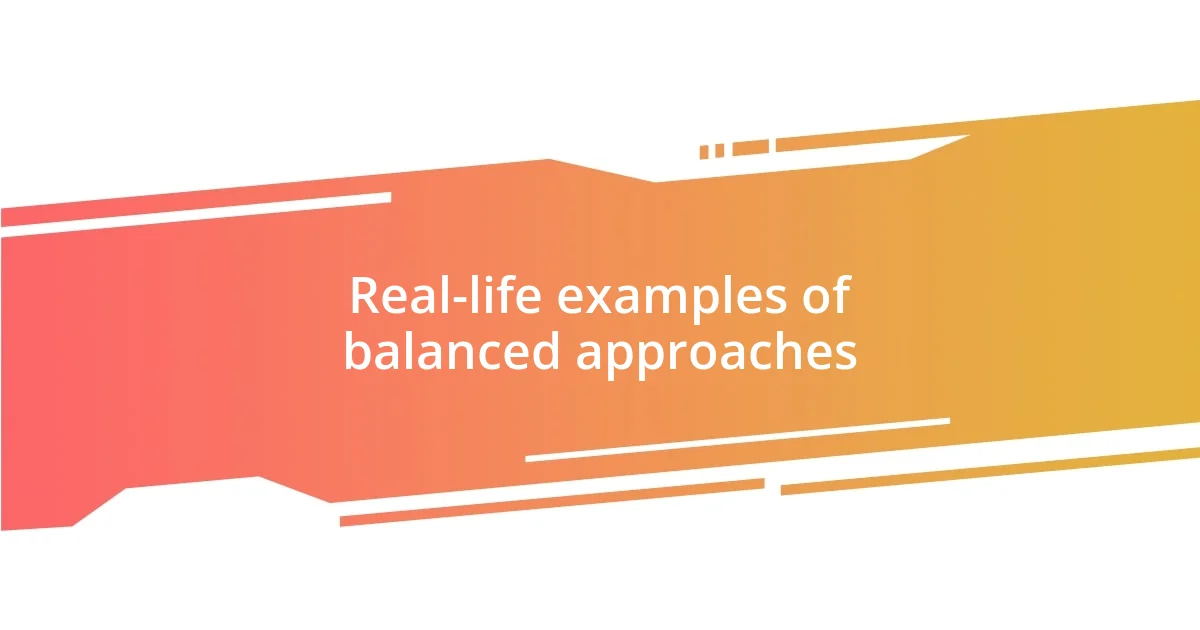
Real-life examples of balanced approaches
One memorable instance of balancing play and learning took place during a community art project I organized. We woven storytelling into large murals, where each child contributed their ideas and drawings. As they worked together, I watched them creatively express feelings while discussing various themes — it was a lesson in empathy and teamwork, all framed within the excitement of art. How often do we find ourselves learning the most during moments of unstructured creativity?
There was this time in my classroom when I decided to incorporate movement into math lessons. We danced our way through addition and subtraction by using giant number cards we created together. The kids weren’t just memorizing facts; they were experiencing the joy of learning through dynamic movement. I truly believe that when we can engage multiple senses, the retention of knowledge becomes that much more impactful.
Another interesting approach I witnessed was a nature-based curriculum, where children explored the outdoors to study different ecosystems. This wasn’t just about textbook learning; it was an adventure! I could see the sheer delight on their faces as they discovered insects, analyzed soil, and even measured tree heights. It left me pondering: how can we further enrich learning by intertwining it with the wonders of the natural world? This combination of exploration and education ignites a curiosity that sticks long after the lesson ends.
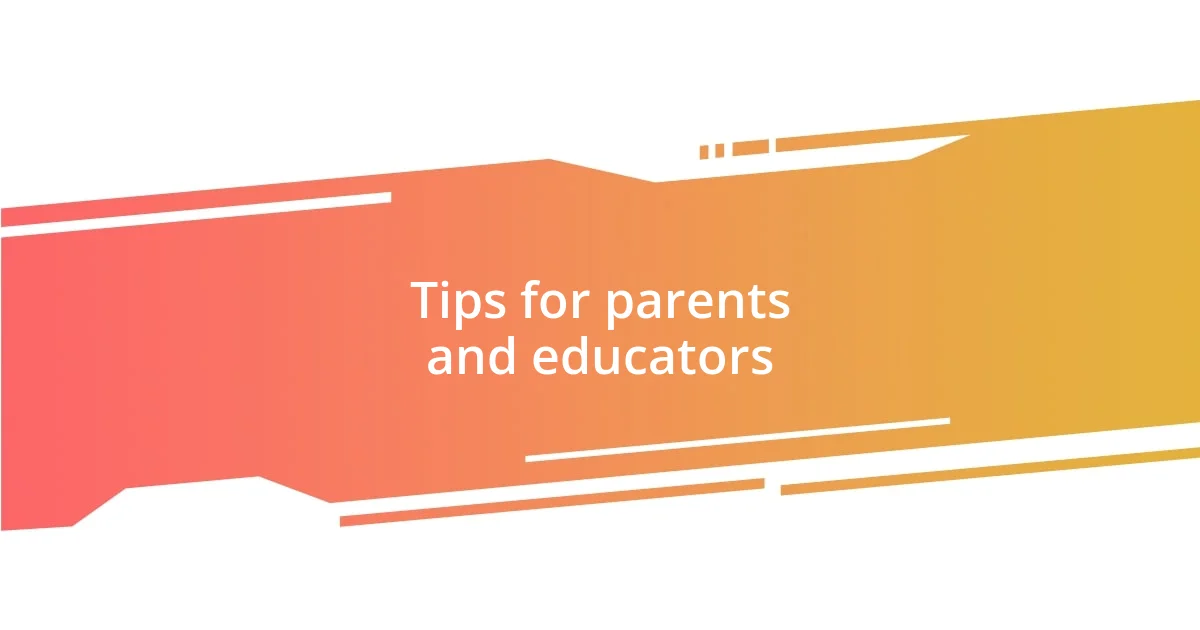
Tips for parents and educators
One effective tip I’ve found is to create a playful environment in the classroom. For instance, I once decorated a corner with comfy cushions and colorful rugs where students could dive into books or work on projects. The cozy atmosphere seemed to invite creativity and collaboration, proving that a warm, inviting space can make learning feel like an open-ended adventure. How might your own environment influence your child’s or student’s eagerness to engage?
Creating themed weeks can also add excitement to the learning process. I remember designing a “Science Safari” week where each day focused on a different habitat or animal. We engaged in hands-on experiments that mirrored real-world ecosystems, and the excitement was contagious! This approach made complex topics more approachable and tied concepts to fun, memorable experiences. How can themes enhance connection and retention in what children learn?
Lastly, involving parents in play-based learning can create a strong community bond. During a family game night at school, I noticed how parents and children collaborated on challenges together, blending fun with education. This unity fostered an appreciation for learning in a relaxed setting and strengthened family connections. Have you thought about how shared experiences in learning could impact relationships in your own family?
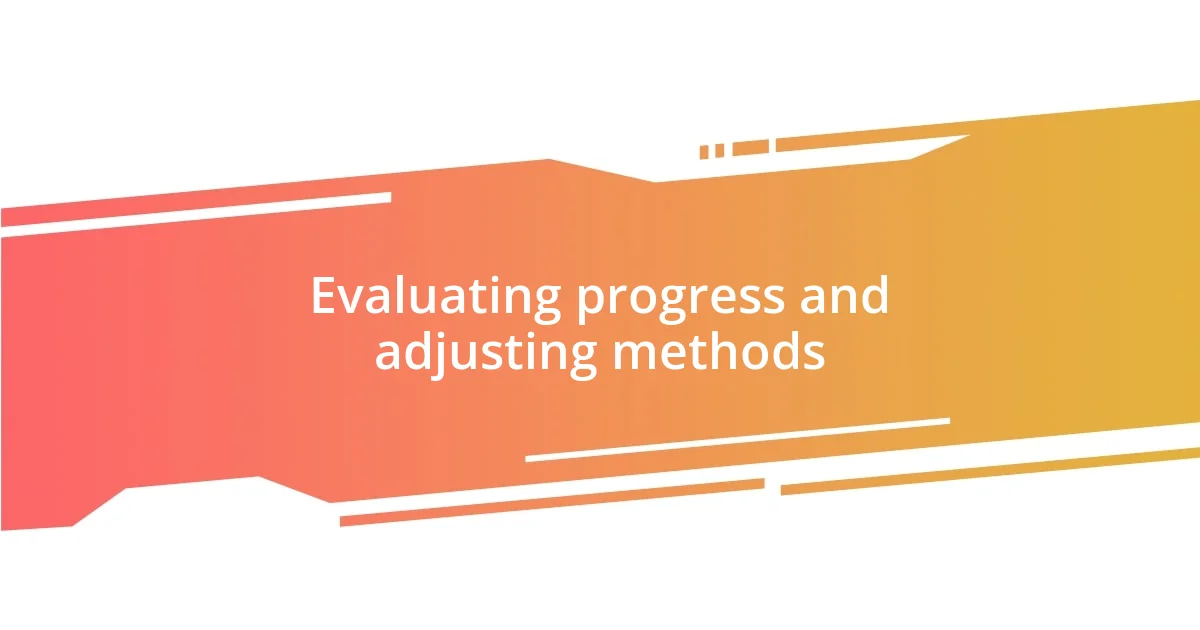
Evaluating progress and adjusting methods
Evaluating progress is crucial in the journey of balancing play and learning. I have often taken the time to observe children’s reactions and engagement levels during activities. For instance, during a storytelling session, I noticed some children were fully immersed, while others appeared distracted. This prompted me to adjust my storytelling style, introducing more interactive elements like sound effects and props. It was remarkable to see how these small changes elevated their involvement.
Another method I find effective is using reflections to gauge understanding. I sometimes prompt students to share what they learned after a play-focused lesson. For example, after a science experiment where we launched homemade rockets, I asked them to describe their favorite part. Their enthusiastic discussions revealed insights I hadn’t considered, reshaping future lessons to make learning even more engaging. Isn’t it fascinating how children can teach us as much as we teach them?
Sometimes, it’s necessary to pivot based on my impressions of the group’s dynamics. I vividly recall a time when a project was met with resistance—it turned out the children’s interests had evolved. By listening closely and incorporating elements they were excited about, such as a popular movie theme, I transformed the project into a collaborative adventure. How often do we remember to truly listen to what our learners are expressing? Adjusting methods based on ongoing evaluations is not just beneficial; it’s essential for keeping the joy of learning alive.










